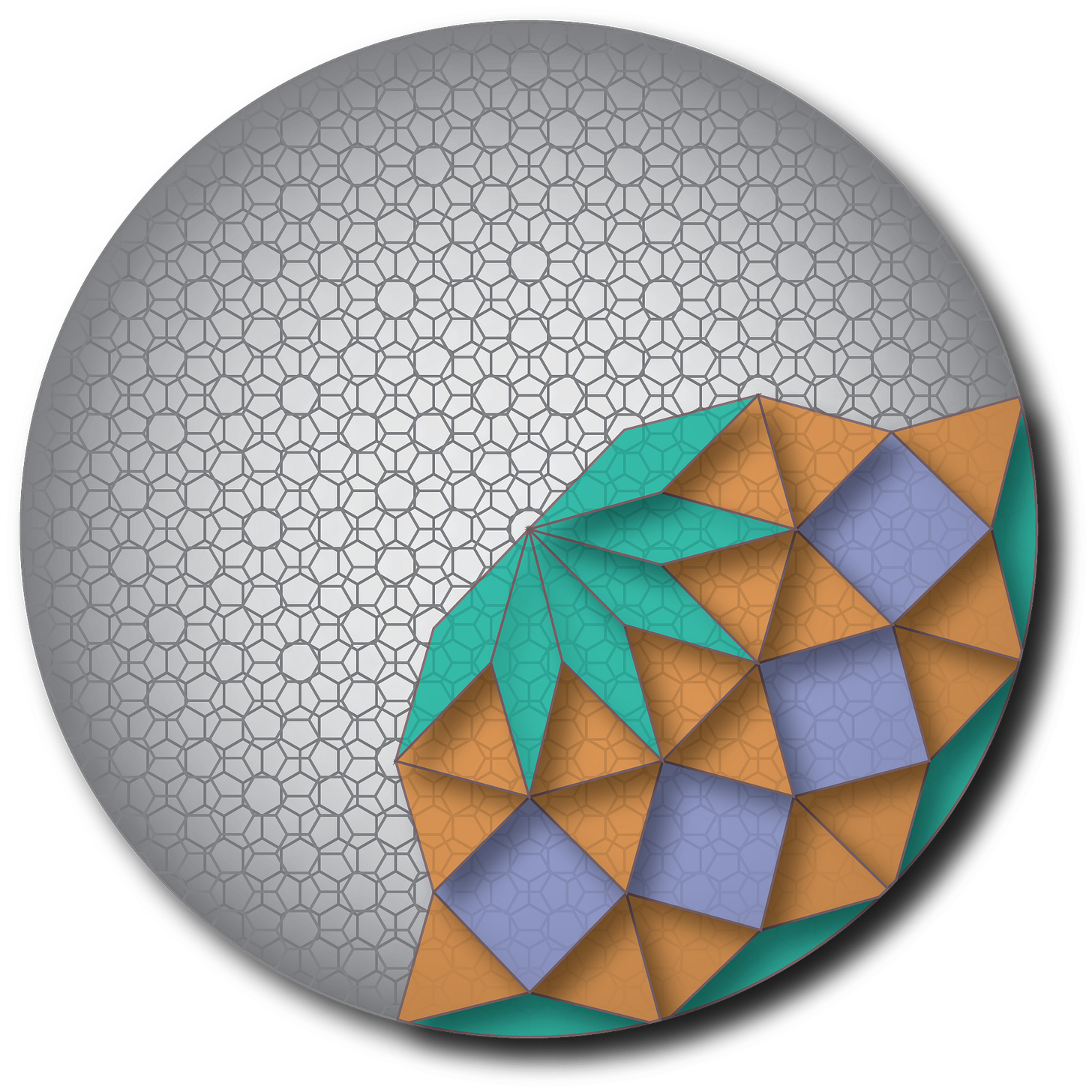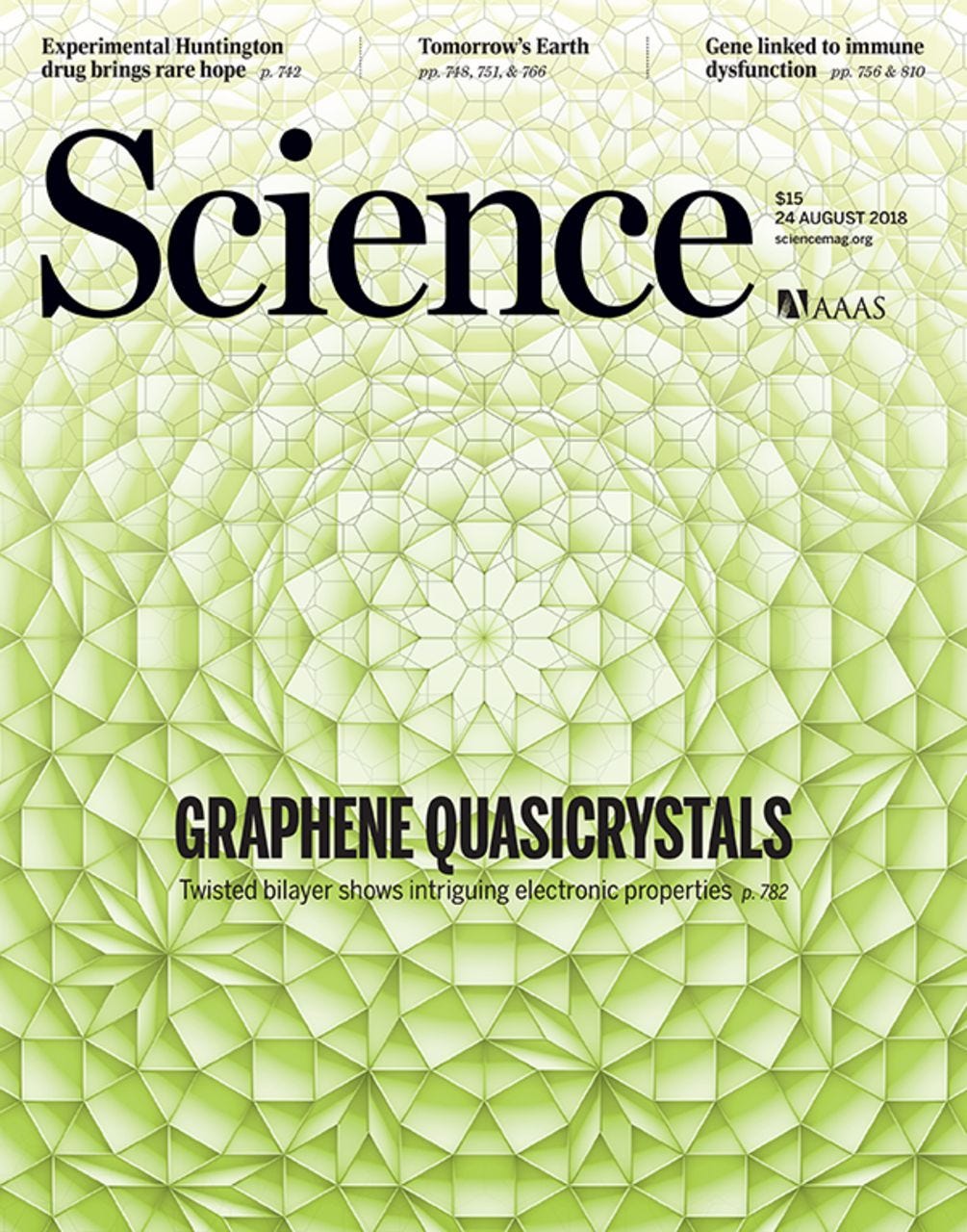This is a slight reworking of a previous post on my personal blog since I am currently traveling.
Quasicrystals, a beautiful manifestation of something without a strict crystalline symmetry but nonetheless shows order, won a Nobel prize in 2011. A bit more recently, in 2018, a dodecagonal graphene quasicrystal (two sheets of graphene twisted 30 degrees with respect to each other) made its way onto the cover of Science1.
This was just the beginning as well, there have been other instances where experimentalists take two layers of atomically thin materials (like graphene, a single layer of carbon) and obtain patterns that are quasicrytalline. One comes from some Rutgers experimentalists involving two layers of graphene and hexagonal boron nitride2.
I’ve been exploring (with collaborators) how this kind of phenomena could help or impede some interesting effects like superconductivity, but that’s a story for another day.
This phenomena inspired me to make what is known as a Penrose tiling so you can see how twisting two layers of graphene at 30 degrees with respect to each leads to a quasicrystal. (Individually, each is a tiling of “hexagons.”) Here it is partially filled up:

One can tell how this is done: You find the points where two hexagons are on top of each other, put down a point, and connect. There are three shapes: a rhombus, an equilateral triangle, and a square. This can be done along the entire sheet to create an amazing looking pattern. For completeness, we can fill in the rest of the pictured grid to obtain:
The pattern starts to look even more intriguing the further out in the tiling you go. There is much to learn about such physical systems and their quasiperiodic cousins.




